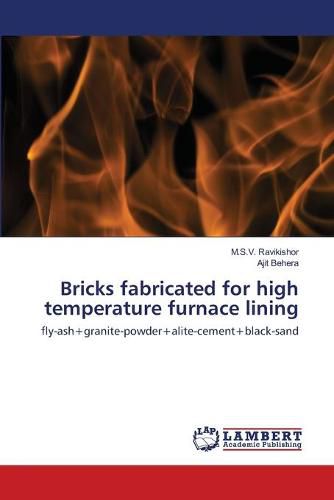Readings Newsletter
Become a Readings Member to make your shopping experience even easier.
Sign in or sign up for free!
You’re not far away from qualifying for FREE standard shipping within Australia
You’ve qualified for FREE standard shipping within Australia
The cart is loading…






This title is printed to order. This book may have been self-published. If so, we cannot guarantee the quality of the content. In the main most books will have gone through the editing process however some may not. We therefore suggest that you be aware of this before ordering this book. If in doubt check either the author or publisher’s details as we are unable to accept any returns unless they are faulty. Please contact us if you have any questions.
Industries associated with high temperature applications such as steel making and iron making industries make use of refractory bricks to carry out their entire manufacturing process. Different steps involved in manufacturing steel involves different types of refractory bricks based on various factors like working temperature, thermal stability, strength, wear resistance, chemical resistance. These bricks are to be replaced after certain duration of time for efficient functioning of the manufacturing units. The production of these refractory bricks involves so many complicated methods which are likewise expensive. As the need of such bricks is humongous for large scale industries, instead of manufacturing these bricks they import the bricks from other countries. Fly-ash, which covers major proportion of world’s industrial waste is known to have very high silica and alumina content. These compounds are known to be some of the important mineral compounds for the manufacturing of refractory bricks which has led to the ideology of using fly-ash for manufacturing of bricks incorporated with additive materials namely granite-powder, alite-cement and black-sand.
$9.00 standard shipping within Australia
FREE standard shipping within Australia for orders over $100.00
Express & International shipping calculated at checkout
This title is printed to order. This book may have been self-published. If so, we cannot guarantee the quality of the content. In the main most books will have gone through the editing process however some may not. We therefore suggest that you be aware of this before ordering this book. If in doubt check either the author or publisher’s details as we are unable to accept any returns unless they are faulty. Please contact us if you have any questions.
Industries associated with high temperature applications such as steel making and iron making industries make use of refractory bricks to carry out their entire manufacturing process. Different steps involved in manufacturing steel involves different types of refractory bricks based on various factors like working temperature, thermal stability, strength, wear resistance, chemical resistance. These bricks are to be replaced after certain duration of time for efficient functioning of the manufacturing units. The production of these refractory bricks involves so many complicated methods which are likewise expensive. As the need of such bricks is humongous for large scale industries, instead of manufacturing these bricks they import the bricks from other countries. Fly-ash, which covers major proportion of world’s industrial waste is known to have very high silica and alumina content. These compounds are known to be some of the important mineral compounds for the manufacturing of refractory bricks which has led to the ideology of using fly-ash for manufacturing of bricks incorporated with additive materials namely granite-powder, alite-cement and black-sand.